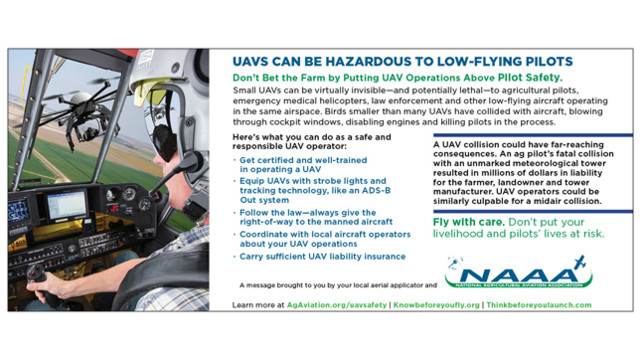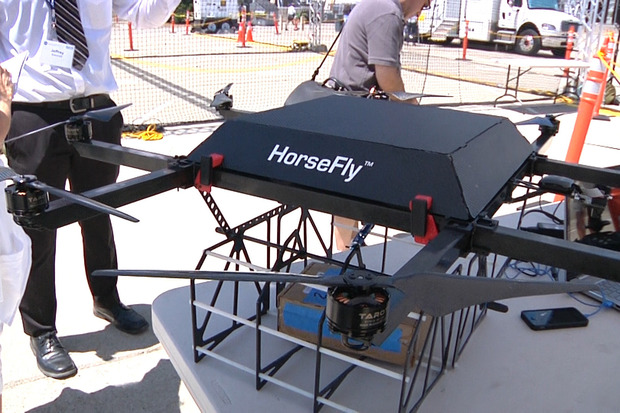
Growing number of commercial players in the emerging drone industry seek Antonelli Law’s drone law services to help secure clearance from the Federal Aviation Administration to conduct drone flights The attorneys of Antonelli Law, a leading Chicago-based drone law firm that specializes in federal commercial drone law, have secured a total of 11 Section 333 Grant of Exemptions, which allow operators of unmanned aircraft vehicles to conduct aerial surveillance for data collection and for a variety of other commercially-driven purposes.
The leading drone lawyers at Antonelli law offer a full spectrum of commercial drone law services that have helped clients in the real estate, engineering, and cinematography fields clear the FAA’S legal hurdles to be able to start flying drones in just a few months.
During July 2015 alone, the law firm’s team of legal and aviation experts have successfully secured four Section 333 approvals. Camera and video-equipped drones are increasingly being used by companies large and small to conduct aerial surveillance. And while thousands of U.S. commercial users want to seize on the potential of drones to leverage their businesses, only about 820 total petitions have been approved by the FAA as of July 2015.
The FAA is expected to finalize its laws for commercial drone operators within the next year, but until then, laws dictating commercial drone use will continue to evolve. Obtaining FAA approval for certain types of drone use has become easier in 2015. Recent changes that took effect earlier this year have allowed Antonelli Law’s Drone/UAS Practice Group to secure Section 333 approvals faster than ever—in as few as 90 days. Previously, every petition filed for commercial drone use had to be reviewed by the FAA on a case-by-case basis with full regulatory analysis and publication in the Federal Register.
Kansas City, Missouri-based engineering firm, Burns & McDonnell Engineering Company Inc., is one of Antonelli Law’s latest clients to receive FAA approval. The company—which provides engineering, architecture, construction, environmental and consulting solutions—received clearance on July 14 to operate a variety of small drones, including the DJI Inspire 1, Draganflyer X4-ES, and SenseFly eBee. Burns & McDonnell is one of several clients of Antonelli Law to obtain FAA approval within 90 days.
“The opportunity for Burns & McDonnell to start deploying drones for 3D aerial utility corridor mapping and infrastructure inspections will not only quicken our ability to deliver quality-driven results to our clients, but drones will undoubtedly increase the safety, productivity, and remote sensing options of our existing aerial data gathering operations,” said Steven Santovasi, department manager, geospatial services for Burns & McDonnell. “Federal drone law is not easy to navigate, however. Securing FAA approval to fly required us to engage the services of the drone law experts at Antonelli Law.”
While drones are showing their positive value in fields such as agriculture, architecture, construction, and real estate; smaller business owners interested in launching commercial drone operations often discover the pursuit to be anything but a low-cost, small-investment decision.
This summer, Antonelli’s Drone/UAS Practice Group launched “Drone Democracy,”—a lower-fee Section 333 service intended to help potential operators of commercial unmanned aircraft systems (UAS) obtain expedited legal clearance from the FAA—as a way to help more commercial users be able to fly drones. Created as a division of Antonelli Law’s Drone/UAS Practice Group, “Drone Democracy” exclusively serves commercial UAS users seeking FAA approval to operate drones for small-scale uses like residential real estate and nature photography.
The firm also now assists clients with obtaining the FAA-required N Number registration, a required step in the process to be able to fly a drone also referred to as the “tail number,” which identifies each drone by a serial number.
Obtaining an N Number for drones obtained from outside the U.S. can be particularly difficult, but for a fee of $250 Antonelli Law will handle the lengthy, bureaucratic process of obtaining N Number registration for commercial drone users.
As an avid drone-user himself, Antonelli’s passion for the law intersects with his interest in flying unmanned aerial vehicles for fun. On his Drone Laws Blog, Antonelli regularly highlights updates in the FAA’s changing regulations for drone users and keeps followers updated with the latest Section 333 exemptions his firm has secured.
“We’re still on the brink of unearthing the many ways drones can aid in so many facets of society—from aiding in search and rescue missions to speeding-up survey work—we haven’t even begun to tap into the full benefits of drones,” Antonelli said.
For a full list of clients that have successfully secured Section 333 approval with the help of Antonelli Law, visit http://dronelawsblog.com/antonelli-law-clients-receiving-section-333-aproval-faa/.






